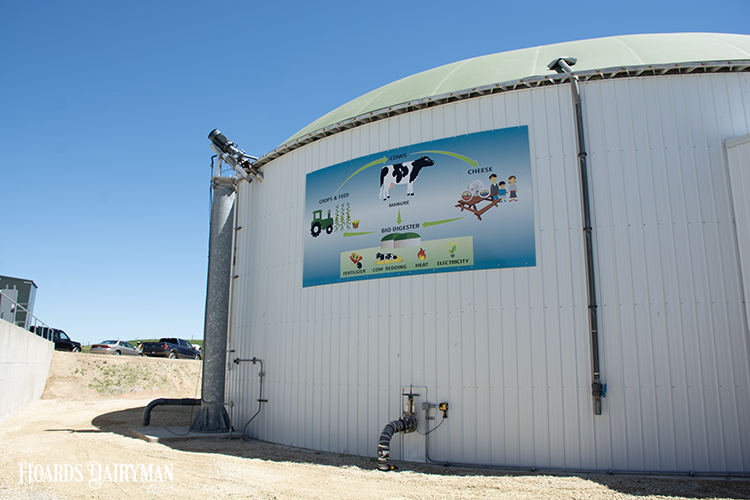
Farms of all shapes and sizes are taking unique steps to be more environmentally friendly. Some of these actions are just part of normal, everyday operations. The fact that cows can turn food humans can’t eat into delicious dairy products they can enjoy is an impressive recycling story right there.
“One of the greatest stories not told right now in animal agriculture is the use of by-products and co-products,” said dairyman Mark Crave during the Wisconsin Agricultural Outlook Forum. From distillers grains to cotton seeds to malt sprouts, he said products that are left over from human food production don’t end up in a landfill; they are fed to animals instead. He estimates that 10,000 tons of by-products are used annually on their farm alone.
Beyond these ration ingredients, Crave shared other ways their farm works to be environmentally friendly. They aren’t just taking these steps to be “climate smart,” he said a lot of what they are doing simply makes sense to them as farmers.
Crave Brothers Farm near Waterloo, Wis., consists of 2,100 lactating cows and 1,300 head of young stock. Through genomic testing they have been able to advance their herd genetically, and he said this information is used to make decisions about which cows to milk and which cows should be bred to generate the next generation of their herd. High-producing cows also benefit the environment, as they make more milk from the same inputs, he noted.
Having a clearer genetic picture of their herd also allows them to raise fewer heifers. Not having excess heifers on site reduces the feed needed and manure generated, Crave shared.
Nearly all their 3,500 acres are used to grow feed for the herd. Crave said minimum tillage, the use of cover crops, and GMO technology that bolsters yields are all ways they maintain soil health and productivity. Once feed is harvested, they are very dedicated to reducing shrink in stored feeds.
“Shrink is anything you harvest the cow doesn’t eat,” said Crave. Even at a very low rate of 4% shrink, the losses are notable. “On 2,500 acres of forage, 100 acres of forage are lost as shrink. You go through all the work to grow that crop, but the cow never ate it,” he calculated.
They fight shrink by using inoculants, harvesting feed at the right moisture, and packing it tight. Bunkers are covered with plastic and rows of tires.
The family also operates Crave Brothers Farmstead Cheese, where they utilize milk from the dairy herd to produce a variety of cheeses, including fresh Mozzarella and Mascarpone. Since milk is pumped directly from the farm to the cheese plant, Crave said that reduces fuel utilization by eliminating 750 truckloads of milk that would otherwise need to be shipped elsewhere. They also feed their animals whey permeate produced during the cheesemaking process.
The third leg of their stool is an anaerobic digester, which has been in operation for 15 years. Manure, cheese whey, and waste sunflower oil that is delivered to the dairy are all utilized to produce electricity. The heat generated by the engine is used to heat the farm shop, office, and house. The digester also provides a source of animal bedding and fertilizer for their crop fields, serving as another example how many aspects of their dairy come full circle centered around the dairy cow.








